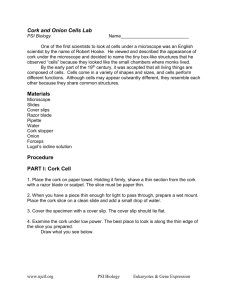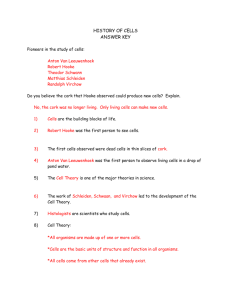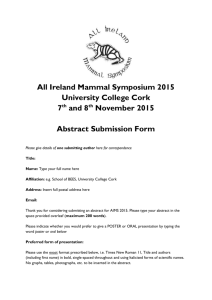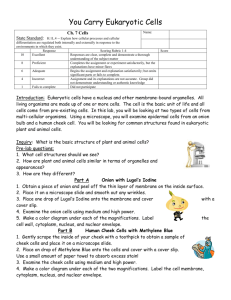Cork and Onion Cells
advertisement
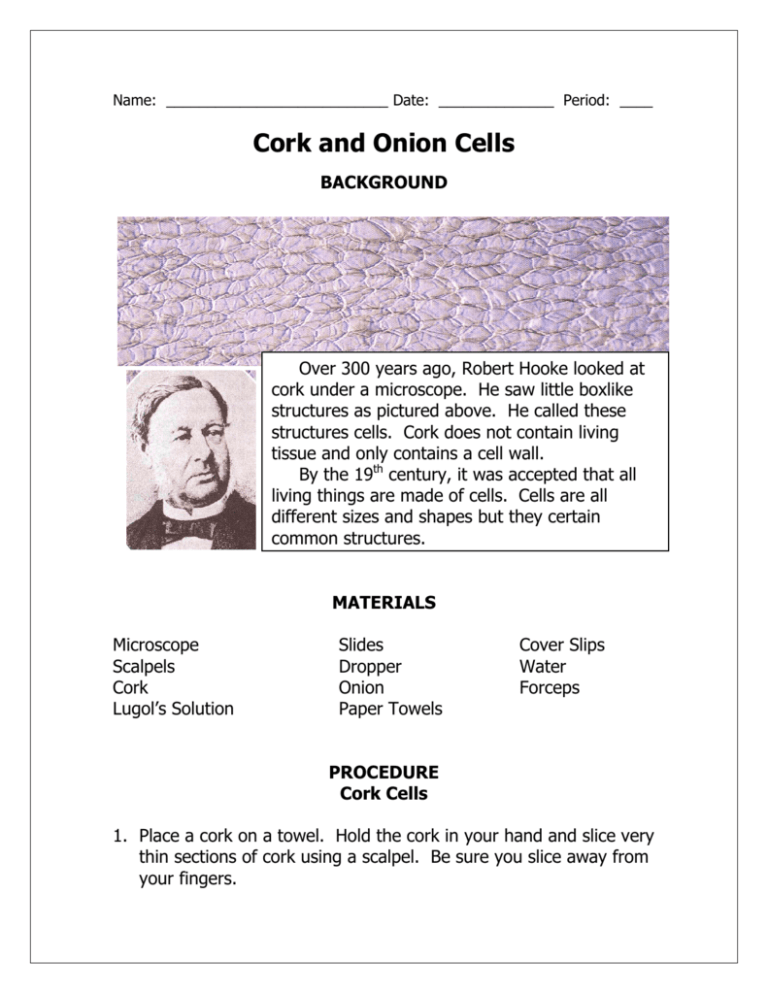
Name: ___________________________ Date: ______________ Period: ____ Cork and Onion Cells BACKGROUND Over 300 years ago, Robert Hooke looked at cork under a microscope. He saw little boxlike structures as pictured above. He called these structures cells. Cork does not contain living tissue and only contains a cell wall. By the 19th century, it was accepted that all living things are made of cells. Cells are all different sizes and shapes but they certain common structures. MATERIALS Microscope Scalpels Cork Lugol’s Solution Slides Dropper Onion Paper Towels Cover Slips Water Forceps PROCEDURE Cork Cells 1. Place a cork on a towel. Hold the cork in your hand and slice very thin sections of cork using a scalpel. Be sure you slice away from your fingers. 2. Place a drop of water on a microscope slide. Place your thin piece of cork on the water and then cover the cork with a coverslip as shown below. 3. Place your slide on the stage of your microscope and view it under the low power (10X) objective lens. Focus ONLY with the coarse adjustment knob. Draw a picture of what you see and label the parts. HINT: Remember that cork is not alive 4. Change the microscope to high power (40X) magnification and focus using ONLY the fine adjustment knob. Draw a picture of your cork cells in the field of view below. Label your drawing. PROCEDURE Onion Skin 1. You will be given a part of a bulb of onion. Separate the layers. In between these layers, there is a very thin skin. Cut a very small square (about .5 cm) through the paper thin epidermis. 2. Use your forceps to lift the very thin piece of epidermis off of the onion layer. Place it on your slide with a drop of water and add a cover slip as shown in step 2 above using cork. 3. View your onion skin under low power (100X). Draw and label your diagram. 4. View your onion skin under high power (400X). Draw and label your diagram. 5. Notice the parts that you were able to see in your previous diagram. Cell parts are transparent (you can see through them) so you must use a stain in order to see some of the organelles. 6. Place Lugol’s solution (Iodine) on your slide as shown below. 7. Look at your onion skin under low and high power and draw each below. Label the parts that you see. Low Power High Power Conclusion Answer the following questions based on your observations in your lab. 1. How can you tell that cork cells are nonliving? 2. What did Hooke actually see when he looked at cork cells? 3. What structures did you see in the onion skin cells that you did not see in cork cells? 4. What structures did you see in both onion skin and cork cells? 5. What are the benefits of using stain on the onion skin cells? 6. What is the disadvantage of using stain on the onion skin cells?
